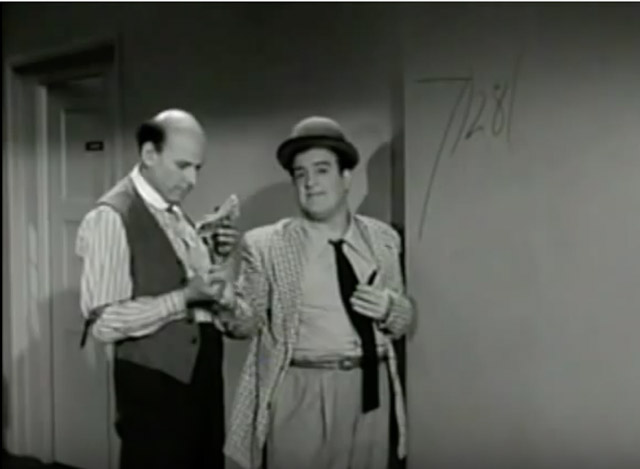I recently saw this video clip from an old Abbott and Costello film (thanks to my Twitter network). It reminds us that math isn’t simply about learning a computational process, or getting the right answer. It’s pretty clear that Lou Costello has learned the wrong algorithm, and he defends his approach it with great determination. See the same mathematical thinking by Ma and Pa Kettle.
We learn math skills so that we can apply mathematical thinking to the problem solving we will need in our lives. Thus, much can be learned from the procedures we use to generate both the “correct” and the “incorrect” answer. Sharing our thinking with others allows us to negotiate a deeper understanding of algorithms and their application in the real world.
The video clip neatly “illustrates” a teaching strategy from Teach Like Your Hair’s On Fire by Rafe Esquith. The book details Esquith’s fifth grade teaching methods in a rough LA neighborhood. Esquith shows us what students can learn from the wrong answer and his process can be easily applied across the curriculum. While it makes for an excellent test taking strategy, its real power is that gives students an engaging perspective to think more deeply about teaching and learning.
Esquith writes, “Let’s say I’m teaching addition. Just before I give the kids their own problems, I put one more problem on the board:
63 + 28 =
Rafe: All right, everybody. Let’s pretend this is a question on your Stanford 9 test, which as we all know will determine your future happiness, success, and the amount of money you will have in the bank. (Giggling from the kids) Who can tell me the answer?
All: 91.
Rafe: Very good Let’s place that 91 by the letter C Would someone like to tell me what will go by the letter A?
Isel: 35.
Rafe: Fantastic! Why 35, Isel?
Isel: That’s for the kid who subtracts instead of adds.
Rafe: Exactly. Who has a wrong answer for B?
Kevin: 81. That’s for the kid who forgets to carry the 1.
Rafe: Right again. Do 1 have a very sharp detective who can come up with an answer for D?
Paul: How about 811? That’s for the kid who adds everything but doesn’t carry anything.
In Room 56, the kids come to learn that multiple-choice questions are carefully designed. It is rarely a matter of one correct answer and three randomly chosen incorrect ones. The people who create the questions are experts at anticipating where students will go wrong. When a kid makes a mistake somewhere in the course of doing a problem and then sees his (incorrect) answer listed as a potential solution, he assumes he must be correct. My kids love to play detective. They enjoy spotting-and sidestepping-potential traps.
When students in Room 56 take a multiple-choice math test with twenty problems, they see it as an eighty-problem test. Their job is to discover twenty correct answers and sixty incorrect ones. It is hysterical to listen to the sounds of the class when the students take a standardized math test. The most common sound is a quiet giggle of recognition. The kids love to outsmart the test and can’t help laughing as they discover one trap after another.”


I love this and have used it in my own classroom. It’s a fantastic way to change students’ thinking.
Great post, Peter. Reminds me to show students examples of poor work, not just good work. Show them misconceptions and brainstorm the errors rather than just showcase the answers.
Thanks again for your insight.